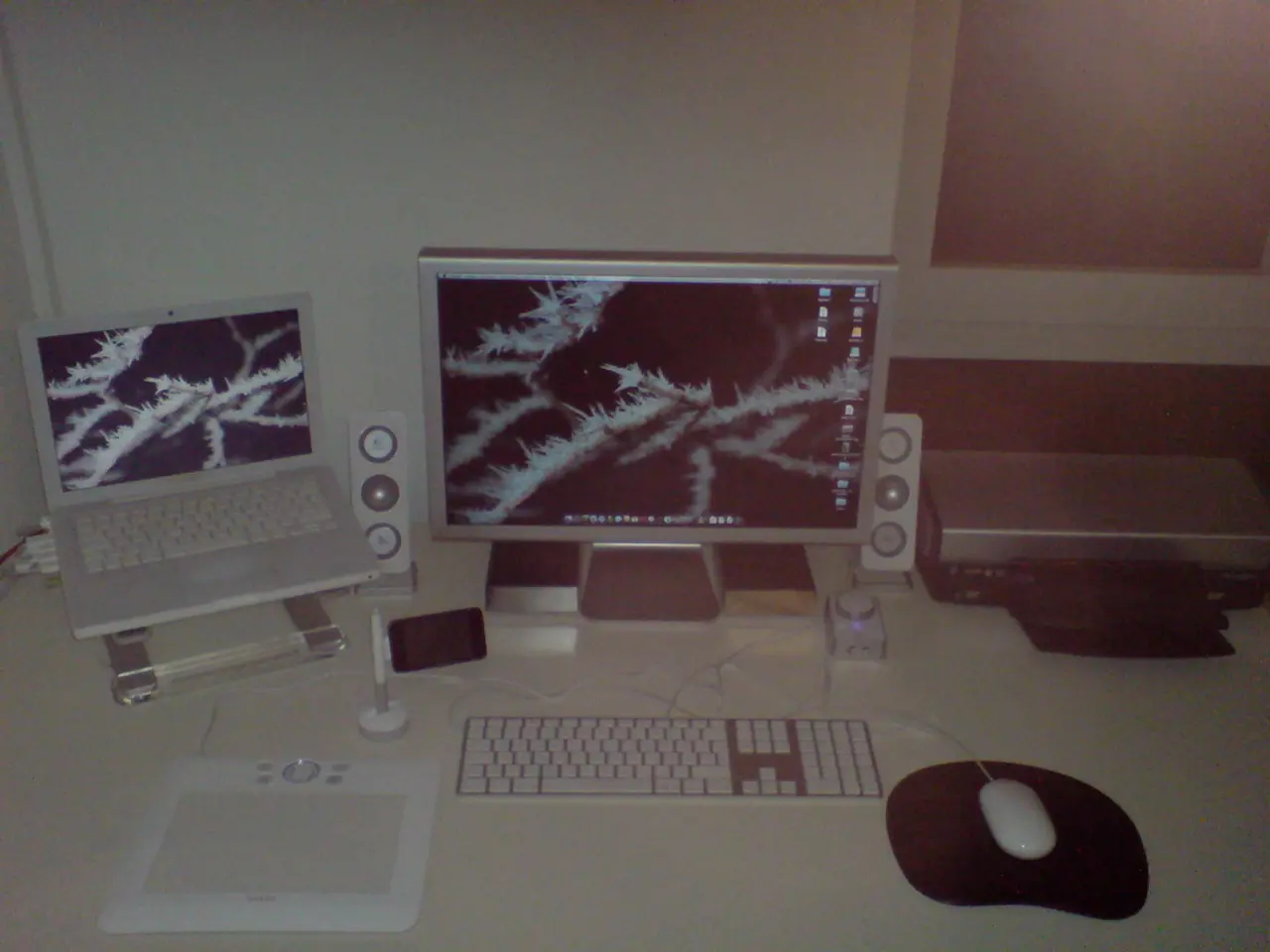Nostalgic spirit and contemporary style of Sinclair GamerCard revived my affection for retro gaming
=====================================================================================================
The Sinclair GamerCard, a credit card-sized retro gaming device, is set to captivate gamers with its unique design and focus on delivering a nostalgic gaming experience.
Priced at $170 / £125, the GamerCard boasts a slim, lightweight form factor that sets it apart from other retro gaming handhelds. Measuring just 128mm by 88mm and 6.5mm thick, and weighing only 100 grams, it is about 80% smaller and lighter than most leading handhelds.
The GamerCard's square 4-inch 720×720 IPS display runs at 60fps, making it ideal for pixel-art style games. This high-speed display, combined with its compact size, gives the device an edge over traditional retro handhelds.
Beyond just emulation, the GamerCard supports coding in MicroPython, C, C++, BASIC, and seamlessly integrates with PICO-8. This makes it not only a retro game player but also a platform for developers to create and share games.
Powered by a Raspberry Pi, the device includes multiple ports such as USB-C for charging, HDMI for video output, and a Qwiic connector enabling plug-and-play expansion with sensors and peripherals without opening the device. This multi-functionality lets the GamerCard transform into a mini desktop PC for development beyond gaming.
The GamerCard's control design features ultra-responsive silicone navigation disks with snap-dome buttons, anti-bacterial coated control pads, and front-facing stereo speakers. Shoulder buttons and system buttons are integrated subtely into its slim form while maintaining good ergonomics.
Pre-installed on the GamerCard are optimized titles originally for Nintendo Switch, such as Saboteur and Bloo Kid 2, along with compatibility with popular emulators like RetroPie and Recalbox for thousands of games.
The device uses an innovative patented PCB sandwich construction that replaces traditional body casings, reducing manufacturing waste and enabling its slimness.
The Sinclair GamerCard's hardware includes a Raspberry Pi Zero 2W with a quad-core ARM Cortex-A53 processor, 128GB storage, and a 1600mAh battery. The games on the device are minimalist and inventive, and the operating system is clean and intuitive.
The GamerCard boots instantly, has a long-lasting battery, and produces no noise or heat. It is not trying to chase market share or headlines but aims to offer a unique and nostalgic gaming experience to those who truly appreciate games and unique design.
The Sinclair GamerCard's design draws inspiration from the ZX Spectrum but is not limited to purely retro sensibilities. It is a testament to Sinclair's legacy and a nod to the oddities in gaming history that didn't quite make it.
In essence, the Sinclair GamerCard combines a highly compact, card-sized modern design with a developer-friendly open platform based on Raspberry Pi, a square high-refresh-rate display tailored to fantasy and retro games, and expandable hardware ports, positioning it as both a retro handheld and a powerful tiny computer system.
[1] Sinclair GamerCard Official Website: https://www.sinclairgamercard.com/ [2] Sinclair GamerCard Kickstarter Campaign: https://www.kickstarter.com/projects/sinclairgamercard/sinclair-gamercard-the-ultimate-retro-handheld [3] Sinclair GamerCard Tech Specs: https://www.sinclairgamercard.com/pages/tech-specs [4] Sinclair GamerCard FAQ: https://www.sinclairgamercard.com/pages/faq
- The Sinclair GamerCard, an innovation in retro gaming, promises a captivating experience with its unique design.
- Priced at $170 / £125, the GamerCard boasts a compact, lightweight form factor, smaller and lighter than most leading handhelds.
- With dimensions of 128mm by 88mm and 6.5mm thick, and weighing only 100 grams, it's approximately 80% smaller and lighter than its contemporaries.
- The GamerCard's 4-inch 720×720 IPS display runs at 60fps, ideal for pixel-art style games.
- This high-speed display, along with its compact size, gives the device an edge over traditional retro handhelds.
- Beyond emulation, the GamerCard supports coding in MicroPython, C, C++, BASIC, and PICO-8, making it a platform for developers.
- Powered by a Raspberry Pi, the device integrates USB-C for charging, HDMI for video output, and Qwiic connectors for easy expansion.
- This multi-functionality lets the GamerCard transform into a mini desktop PC for development beyond gaming.
- The GamerCard's control design features ultra-responsive navigation disks, anti-bacterial coated control pads, and front-facing stereo speakers.
- Pre-installed are titles like Saboteur and Bloo Kid 2, along with compatibility with RetroPie and Recalbox for thousands of games.
- The device uses a patented PCB sandwich construction for its slimness and reduced manufacturing waste.
- The GamerCard's hardware includes a Raspberry Pi Zero 2W, 128GB storage, and a 1600mAh battery.
- The games on the device are minimalist and inventive, and the operating system is clean and intuitive.
- The GamerCard boots instantly, has a long-lasting battery, and produces no noise or heat.
- It's not trying to chase market share or headlines but offers a unique and nostalgic gaming experience.
- The GamerCard's design draws inspiration from the ZX Spectrum but extends beyond purely retro sensibilities.
- It's a testament to Sinclair's legacy and a nod to the oddities in gaming history that didn't quite make it.
- The GamerCard combines a modern, compact design with a developer-friendly open platform based on Raspberry Pi.
- Its square high-refresh-rate display is tailored to fantasy and retro games.
- The device's expandable hardware ports position it as both a retro handheld and a powerful tiny computer system.
- Visit the Sinclair GamerCard's official website for more information.
- The Kickstarter campaign for the GamerCard is also worth checking out.
- For technical specifications, head to the Sinclair GamerCard Tech Specs page.
- Questions about the device can be answered in the FAQ section.
- The GamerCard offers a unique blend of art, design, and technology in the realm of gaming.
- The UI and UX design of the GamerCard is creative, making it a joy to navigate.
- The device's layout is ergonomic, ensuring a comfortable gaming experience.
- The GamerCard's branding pays homage to Sinclair's legacy and the world of retro gaming.
- Beyond gaming, the GamerCard can be used for lifestyle purposes such as photography with its camera function.
- In the fashion-and-beauty sector, the GamerCard can serve as a unique accessory.
- For food-and-drink enthusiasts, the device can be used to explore various recipes.
- In home-and-garden projects, the GamerCard can be a helpful tool for design and planning.
- Furthermore, the GamerCard can foster relationships, particularly in digital spaces like social media, and offer insights into lifestyle trends.




